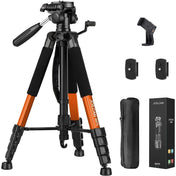Photographing wildlife can be a thrilling and rewarding experience for any photography enthusiast. Whether you're capturing birds in flight, majestic lions on the prowl, or playful dolphins in the ocean, wildlife photography allows you to connect with nature and capture its beauty in a unique way.
1. Know Your Gear
Before setting out to photograph wildlife, make sure you are familiar with your camera and equipment. Practice changing settings quickly, adjusting focus, and using different lenses so that you are prepared to capture moments on the fly.
2. Research Your Subject
Understanding the behavior and habitat of the wildlife you plan to photograph can significantly improve your chances of capturing compelling shots. Research their habits, movements, and preferred environments to anticipate their actions.
3. Patience is Key
Wildlife photography requires patience. Animals may not always cooperate or appear when you want them to. Be prepared to wait hours for the perfect shot, and remember that sometimes the best images come to those who are willing to be patient.
4. Use Natural Light
When possible, shoot during the golden hours of sunrise and sunset when the light is soft and warm, creating a magical glow on your subjects. Natural light can enhance the mood and quality of your wildlife photos.
5. Get Eye-Level
For a more intimate and engaging shot, try to get at eye level with your subject. This perspective can create a connection between the viewer and the animal, making the image more captivating.
6. Mind Your Composition
Compose your shots carefully by considering the rule of thirds, leading lines, and negative space. A well-composed image can draw the viewer's eye to the subject and evoke emotion.
7. Capture Action Shots
Wildlife is dynamic and constantly on the move. Be ready to capture action shots such as animals hunting, flying, or playing. Use a fast shutter speed to freeze motion and convey a sense of energy in your photos.
8. Respect Wildlife
When photographing animals in their natural habitat, always prioritize their well-being. Maintain a safe distance, avoid disturbing their behaviors, and never feed or touch wild animals for the sake of a photo.
9. Experiment with Perspectives
Don't be afraid to experiment with different angles and perspectives to create unique and artistic wildlife photos. Try shooting from above, below, or from a distance to add variety to your portfolio.
10. Be Mindful of Backgrounds
A cluttered or distracting background can take away from the beauty of your wildlife subject. Look for clean, unobtrusive backgrounds that complement and enhance the main focus of your photograph.
11. Use Continuous Focus Mode
When photographing moving wildlife, use your camera's continuous focus mode to track and capture sharp images of fast-moving subjects. This mode helps ensure that your shots are in focus, even as the animals move.
12. Embrace Imperfections
Wildlife photography is unpredictable, and not every shot will be perfect. Embrace imperfections, learn from your mistakes, and use them to improve your skills and techniques. Remember, practice makes perfect!
Start Capturing Wildlife Beauty Today!
By following these tips and techniques, you can enhance your wildlife photography skills and capture stunning images of nature's incredible creatures. Get out in the wild, be patient, and let your passion for photography guide you to magical wildlife moments!











